- Jul 19, 2024
- 5 min read
How to pass KYC in 2024
Learn what KYC is and the steps users should take to onboard smoothly.
Fraud, especially sophisticated fraud, is gaining pace. In 2023, the US Federal Trade Commission received more than 1 million reports of identity theft through their website alone. Fraudsters often use stolen personal information to create fake accounts or gain unauthorized access to existing accounts. Identity theft, along with synthetic identity fraud, account takeover, online payment fraud, and document forgery, are the types of fraud online businesses most often encounter during the onboarding process.
The first line of defense protection against various kinds of fraud at the onboarding stage is “Know Your Customer” (KYC). Let’s dive into this crucial verification procedure and the steps a user should take to successfully pass it.
What is KYC verification?
“KYC” is an abbreviation for "Know Your Customer”, which is the process of identifying and verifying customers. This process is needed by both regulated and unregulated businesses. For the former, it’s to comply with Anti-Money Laundering (AML) regulations; for the latter, it’s to prevent and combat fraud and the losses it causes.
User identification involves gathering a customer’s personal data, while verification entails ensuring the accuracy of this data.
To identify a customer, businesses typically require at least the following information:
- Name
- Date of birth
- Address
To verify this data, businesses can use a document-based verification approach. This involves examining the customer's identity documents and proof of address (such as a utility bill) to confirm their authenticity and validity.
In many jurisdictions, however, a document-free verification approach is gaining popularity. Check here to learn what this is and where it’s compliant.
According to Anti-Money Laundering (AML) obligations, businesses must ensure customers are trustworthy by checking global sanctions lists, watchlists, blocklists, or adverse media.
For more detailed information, check out other articles by The Sumsuber:
- KYC Guide—What’s KYC and Why is It Important?
- KYC and AML—Key Differences and Best Practices (2024)
- KYC Onboarding—How to Ensure AML Compliance
How does KYC verification work?
KYC verification works by first collecting essential personal information from the customer. Various automated and manual verification checks are then used to validate user identity. This includes ID verification, proof of address checks, and more. Advanced vendors like Sumsub offer extra products such as workflow customization, reporting, dashboards, collaboration tools, and many other optimization measures useful for a compliance team.
For businesses that choose to use a document-based verification approach, the process involves scrutinizing the documents for authenticity and cross-referencing them against various databases. In many jurisdictions, however, a non-documentary verification is enough to ensure that the client is who they say they are and comply with local regulations.
Additionally, under Anti-Money Laundering (AML) regulations, businesses must ensure that the customer is not involved in illegal activities. This is done by checking the customer's information against global sanctions lists, watchlists, blocklists, and adverse media reports. By conducting these thorough checks, businesses can prevent fraud and comply with regulatory requirements, ensuring that they only engage with legitimate and trustworthy customers.
How to verify that the customer’s documents are authentic
- Request personal data (name, date of birth, address)
- Perform a liveness check to verify that the customer is a real and living person. This can be done through facial biometrics authentication (liveness), which allows businesses to confirm that the provided ID document is truly in possession of the owner of the document.
- Verify that the customer’s documents are authentic. This step may include AML screening to check whether the customer is on adverse media, sanctions lists, PEP lists, etc.
- Verify that the customer actually resides in their selected country by checking utility bills, bank statements, or other proof of address documents. This includes checking whether the customer comes from high-risk countries (e.g. Iran and North Korea) or countries under increased monitoring.
- Determine the risk category of the customer based on the results of the above checks. Depending on the calculated risk level, businesses can adjust their approach to the customer’s verification. Accordingly, a higher risk score will necessitate additional checks.
Let’s go over the exact steps to passing KYC verification with Sumsub.
KYC verification steps
Make sure your web or mobile camera is connected and working. Then, click “Start” and follow the instructions displayed on the screen. You may begin verification on desktop and switch to mobile midway through, if necessary. To do so, press “Continue on your phone” to switch to mobile using a QR code or a link.
Step 1. Privacy Terms
Please review and accept our privacy terms by ticking the corresponding boxes. This gives Sumsub consent to process your personal data.
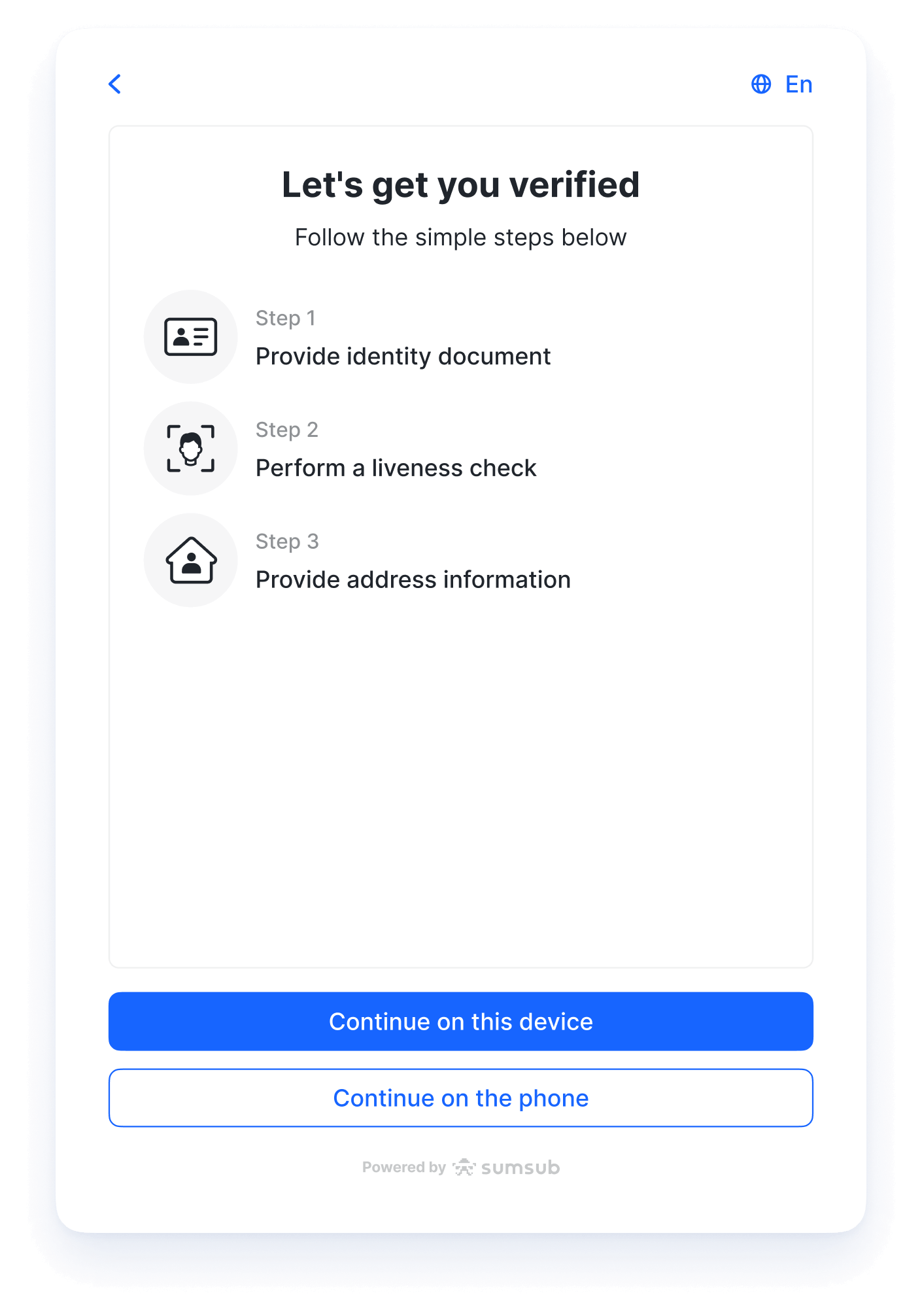
Step 2. ID Document
Select the issuing country and document type of the ID you wish to use.
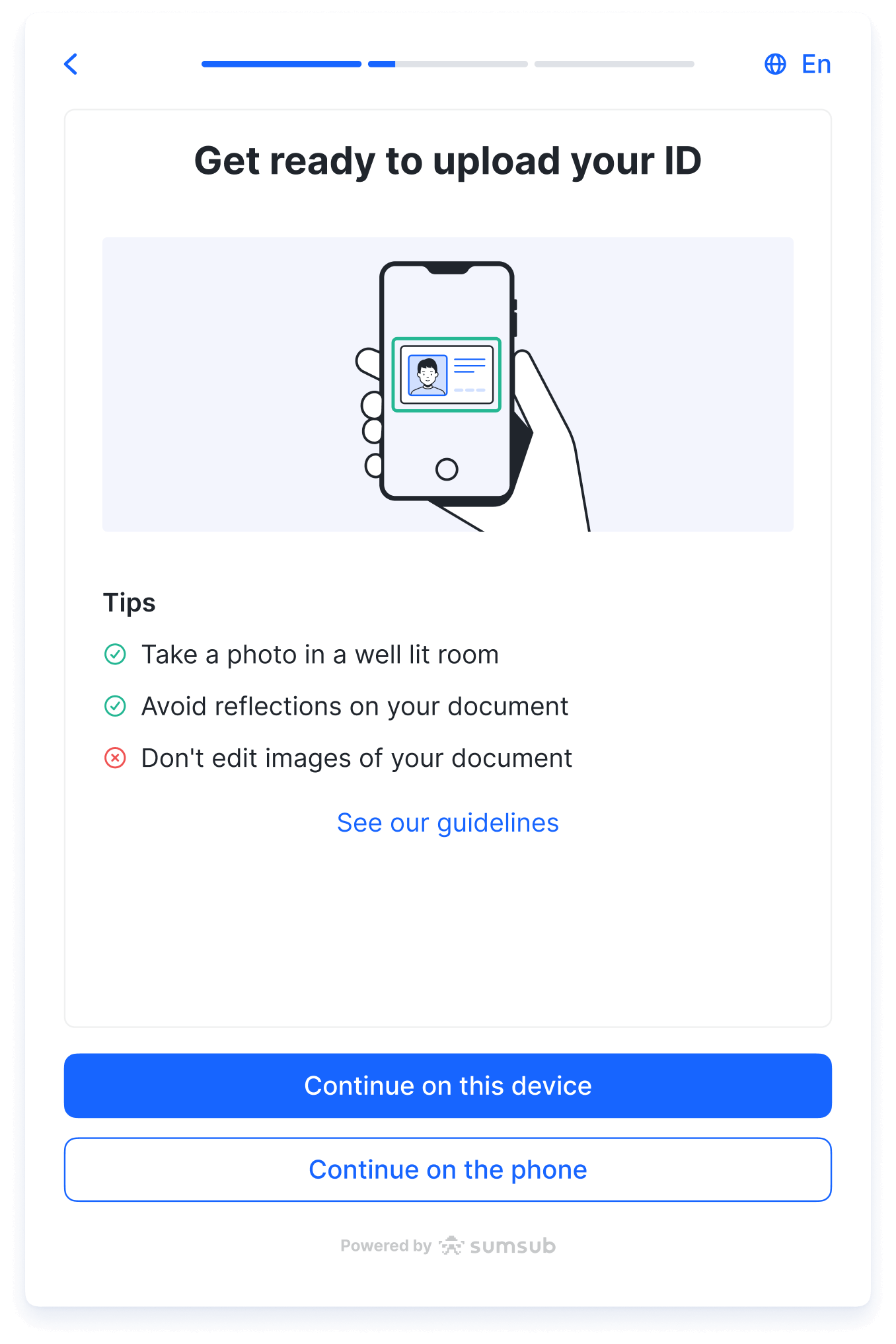
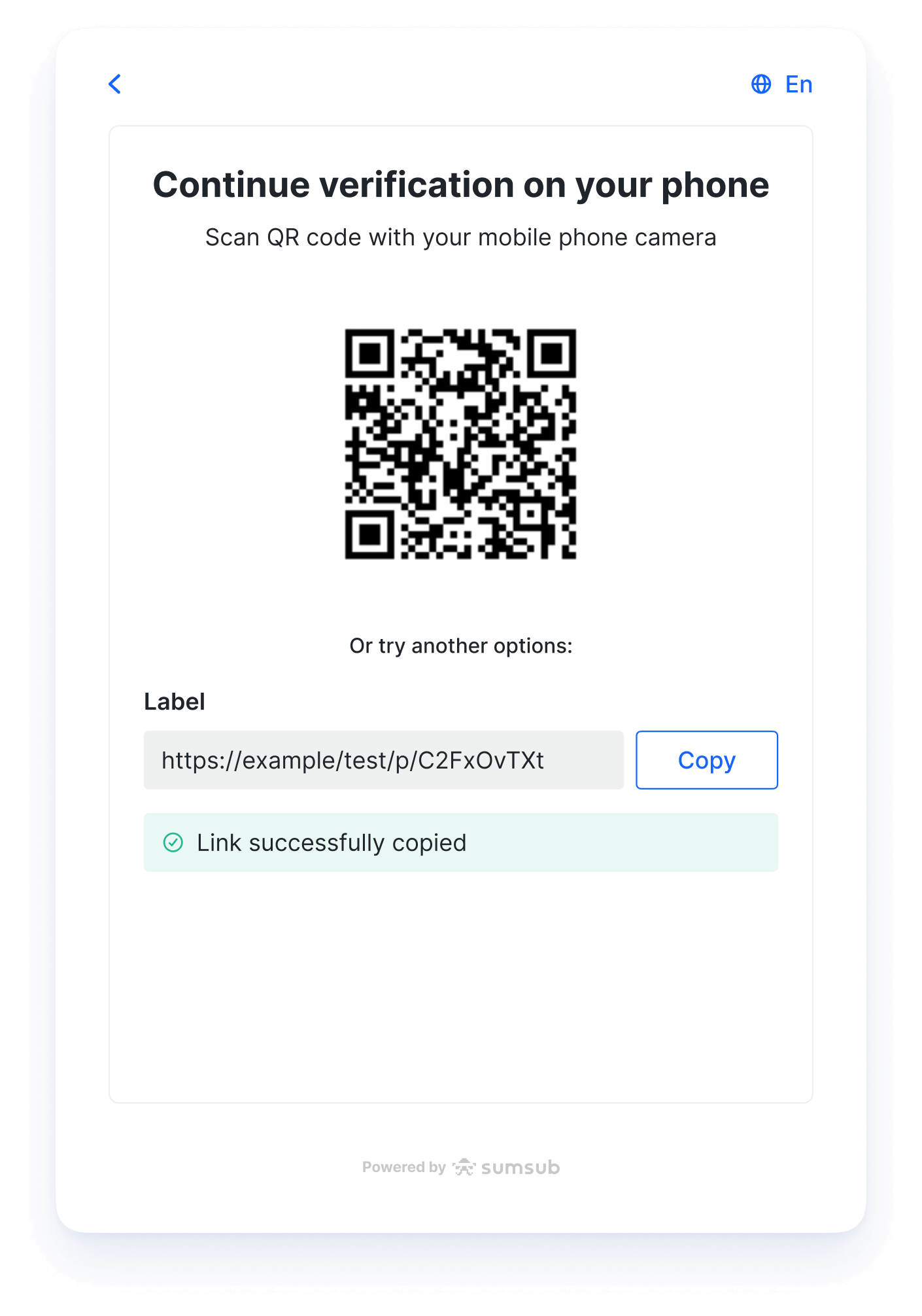
Upload photos of the ID document. You can use any official government document—ID-card, passport, driving license, etc.—valid for at least one month after the present date.
You can find more details on Sumsub’s ID document requirements at this link.
When taking photos, please note that:
- the information on the document must be clearly legible
- all corners of the document should visible within the frame
- two-page or two-sided documents must have all pages/sides photographed
- acceptable file types are JPEG and PDF at least 500KB in size.
Step 3. Liveness Check
Face the camera and slowly rotate your head in a full circle to complete our liveness verification.
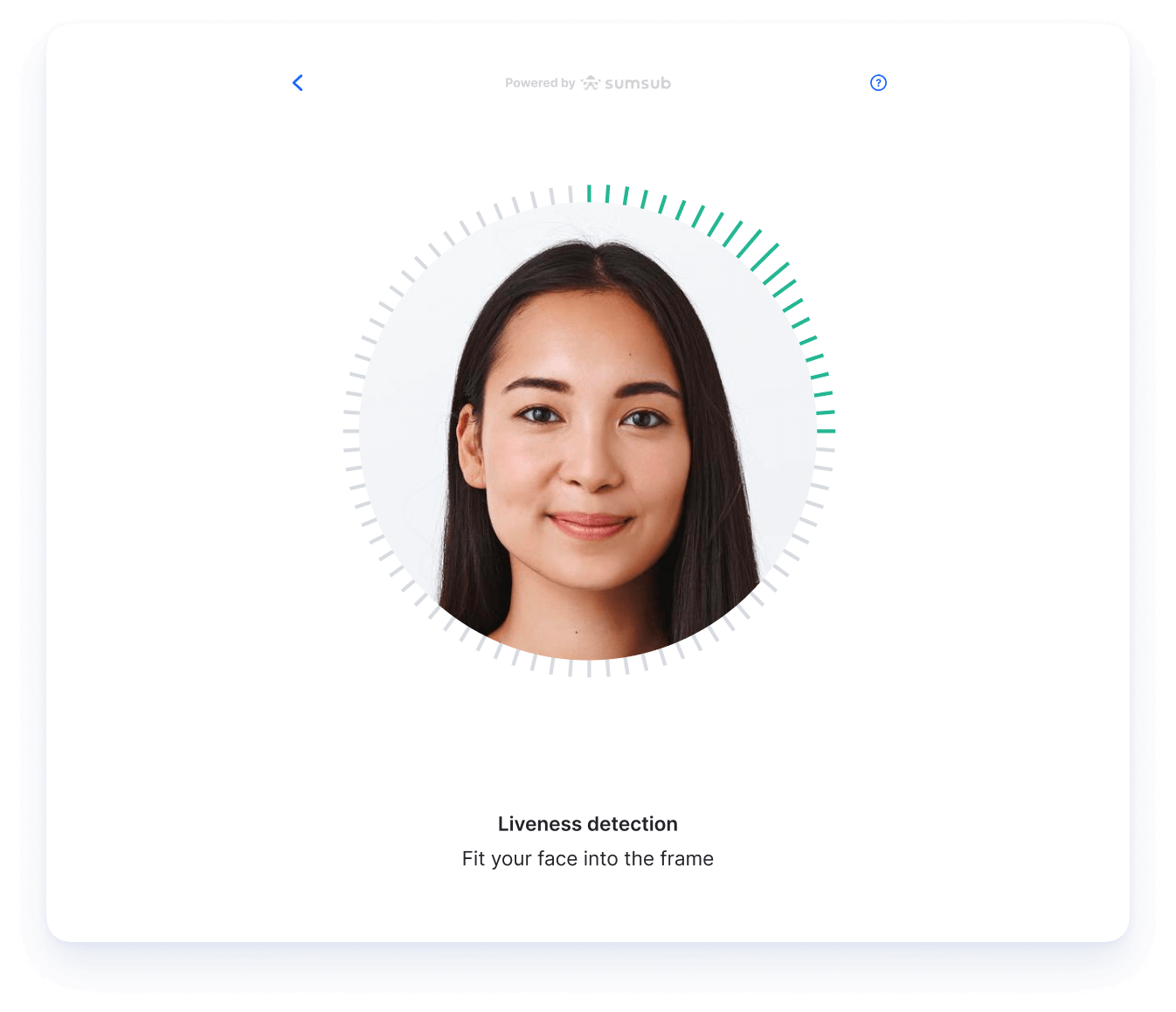
Liveness verification confirms that we are dealing with the document owner, rather than an imposter. Please keep your face within the frame throughout the procedure.
Learn more about what Liveness Detection is and how it works in this article:
Suggested read: Liveness Detection: Choosing a Solution That Won’t Let Fraudsters in
Step 4. Proof of Residence
Submit photos of proof of residence documents for validation—the same way you uploaded your ID document.
When taking photos, please note that:
- utility bills and bank statements must be no older than 3 months and be printed on an official form
- the document must contain your full name (the same as on your ID document)
- all corners of the document should be within the frame, with the address and date of issue legible
- the documents must differ from those used in step 2
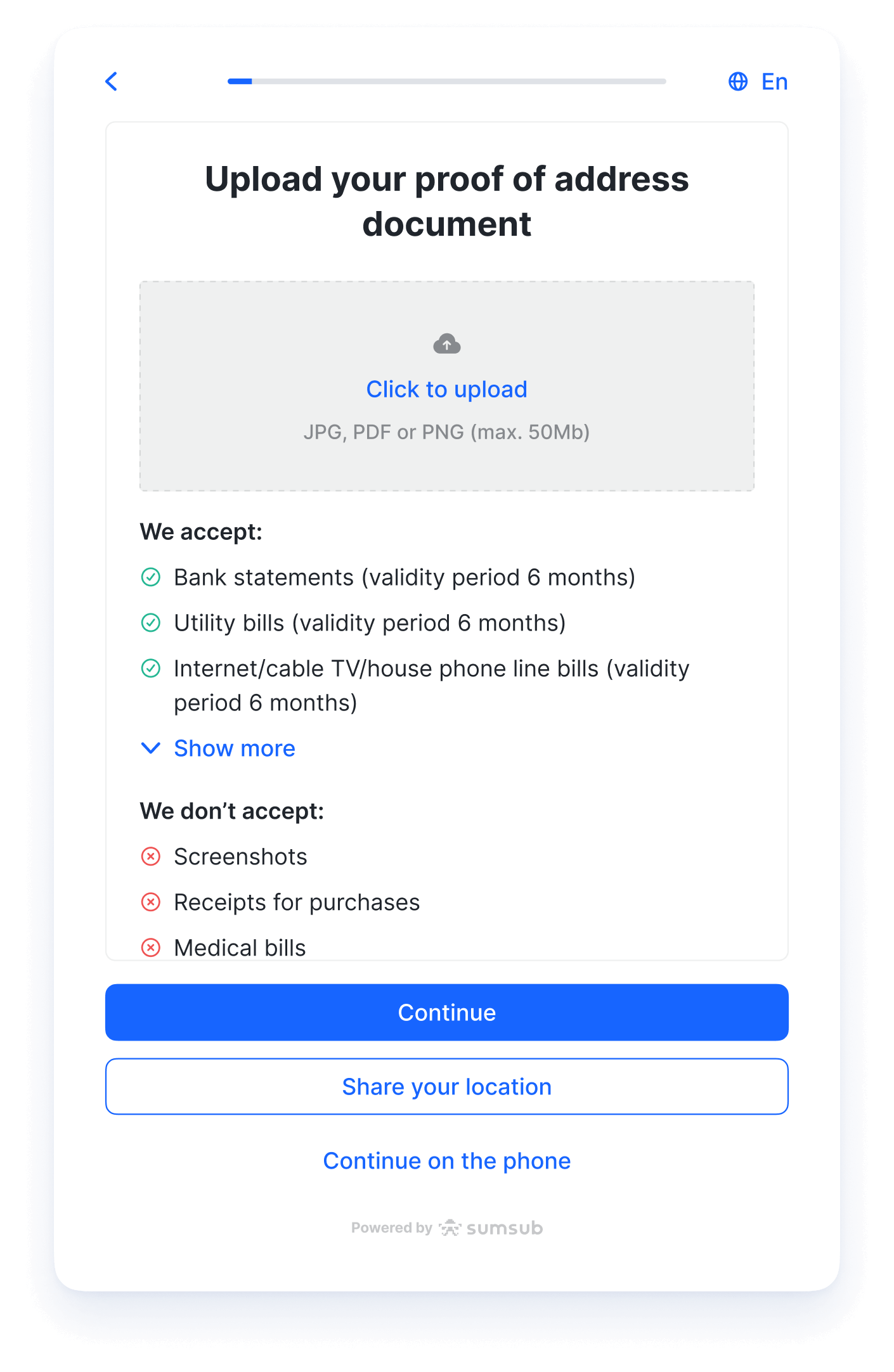
Step 5. Submitting your application
Now you’ll just have to wait while Sumsub checks your data. This won’t take long and the status of your application will be updated automatically. If something goes wrong, you’ll get a message with clear instructions on how to resolve the issue.
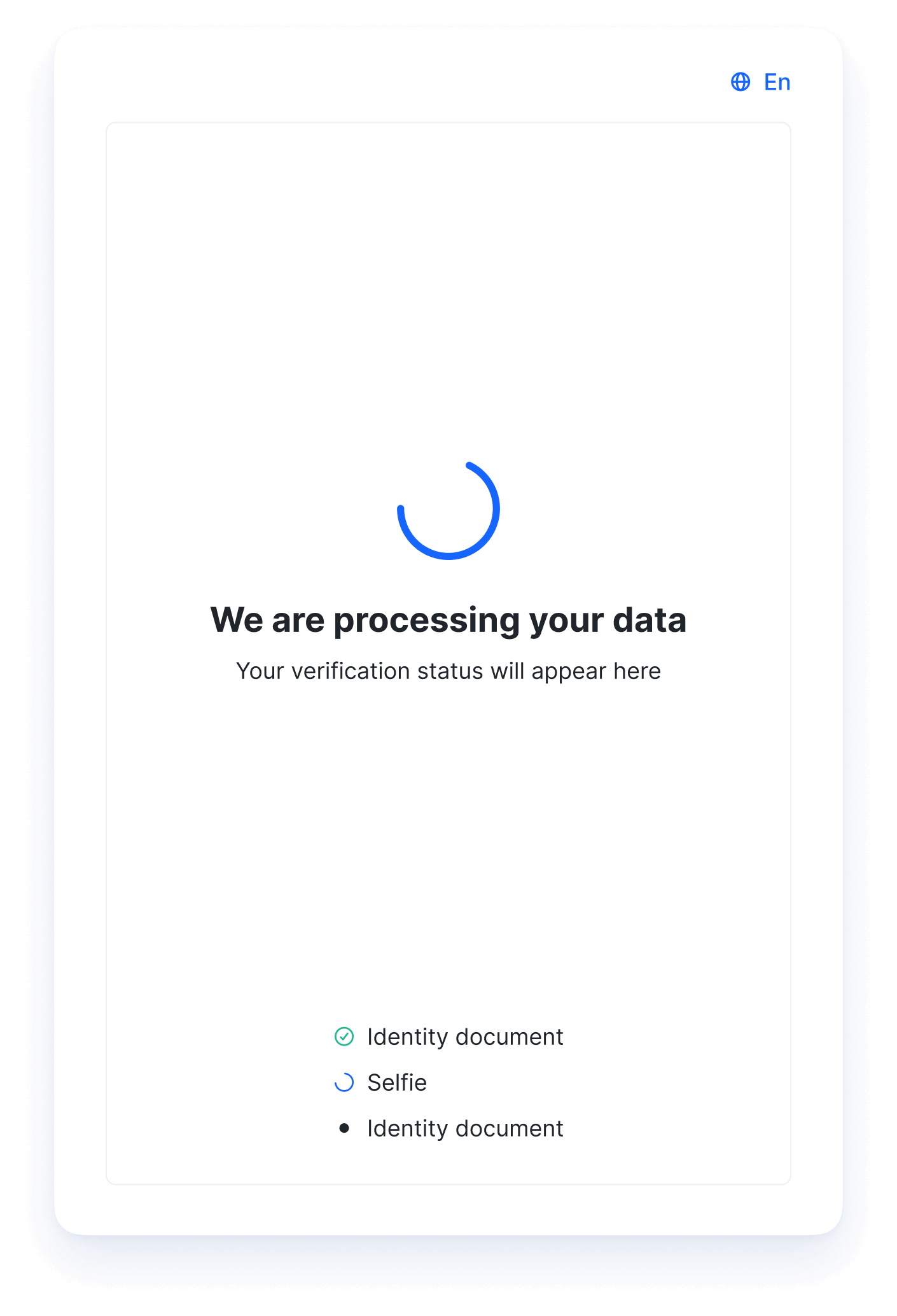
Why is KYC necessary for businesses?
KYC is necessary both for AML-regulated and unregulated businesses to verify the identity of their customers, ensuring they are legitimate and trustworthy. KYC helps prevent fraud, money laundering, and other illegal activities by confirming that customers are who they claim to be. Additionally, complying with KYC regulations protects businesses from legal penalties, license revocation, and reputational harm.
Just recently, the Reserve Bank of India (RBI) barred Kotak Mahindra Bank from onboarding new customers through online and mobile banking channels due to serious deficiencies and non-compliances observed in IT inventory management, patch and change management, user access management, vendor risk management, and data security. Additionally, the regulator directed the bank to stop issuing new credit cards.
Suggested read: The Biggest Money Laundering Scandals of the Last 10 Years
Since KYC falls under AML requirements, any business subject to AML regulations must perform KYC procedures. Typically, these include financial institutions, crypto businesses, and iGaming platforms that offer their services continuously and without limitations.
However, KYC is also crucial for non-regulated businesses, such as marketplaces and car-sharing platforms. It helps filter out suspicious individuals and risky suppliers.
For business clients, it’s also crucial to conduct a “Know Your Business” procedure.
Suggested read: Understanding KYB and How it Relates to KYC (2024)
How to save on KYC costs
To save on KYC costs, businesses can consider the following strategies:
- Automate the process: Implement automated KYC solutions that use advanced technologies, such as artificial intelligence and machine learning, to streamline the KYC verification process. This reduces the need for manual intervention, saving both time and labor costs.
- Outsource to providers: Partner with a reliable third-party KYC service provider that specializes in efficient and cost-effective KYC identity verification and adopts the latest technologies. They can offer scalable solutions that are usually more economical than maintaining an in-house team.
The price for KYC depends on multiple factors, including extra features like questionnaires, the level of support, and more. In Sumsub’s case, you can start with as little as $1 per online KYC verification.
Sumsub offers you a full-cycle verification solution that not only verifies users at onboarding, but also provides ongoing monitoring. According to our internal research, 70% of fraud happens after the onboarding stage, therefore constant monitoring is crucial to prevent fraud, money laundering, and financial losses.
Moreover, you can adjust the platform according to your needs, set up verification logic with no code, and achieve the highest pass rates.
FAQ
-
What are some KYC trends in 2024?
In 2024, the key KYC trends include increased use of AI/ML for real-time verification, enhanced biometric authentication, and greater emphasis on continuous monitoring to prevent fraud and ensure compliance with evolving regulations.
-
How long does online KYC verification take?
30 seconds is the average verification time with Sumsub.
-
How can I pass KYC verification?
In order to pass KYC, users usually need to upload an ID document (except in countries where Non-Doc verification is already accepted and compliant) and pass a liveness check.
Relevant articles
- Article
- Nov 17, 2025
- 8 min read

- Article
- 3 days ago
- 6 min read
Your guide to fraud in the travel industry and how modern identity verification helps airlines, hotels, travel platforms, and more stay protected fro…

What is Sumsub anyway?
Not everyone loves compliance—but we do. Sumsub helps businesses verify users, prevent fraud, and meet regulatory requirements anywhere in the world, without compromises. From neobanks to mobility apps, we make sure honest users get in, and bad actors stay out.


